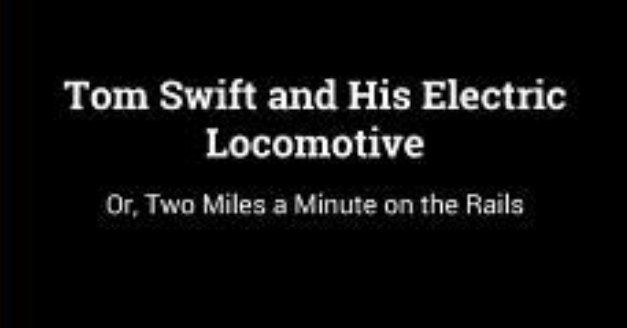CHAPTER XXV — Tom Swift and His Electric Locomotive
byCHAPTER XXV – Tom Swift and His Electric Locomotive begins with an air of tense anticipation as the Hercules 0001 prepares for its full-speed test run across the Hendrickton & Pas Alos Railroad. With Tom Swift at the controls and key figures such as Mr. Damon and Mr. Bartholomew aboard, the locomotive begins its journey with a smooth start that quickly evolves into a powerful demonstration of electric precision. As the miles pass and the mountainous terrain approaches, the locomotive does not falter. The climb over the Pas Alos Range, once feared for its sharp grades and long hauls, is handled with quiet efficiency. The steady hum of electric energy replaces the familiar rumble of steam. Tom’s invention proves its strength where it matters most—under pressure, in motion, and on schedule.
Throughout the journey, reactions of the passengers reflect both awe and validation. Mr. Bartholomew watches the gauges and notes each mile with satisfaction, realizing this engine may become the backbone of his rail line’s future. Mr. Damon, ever enthusiastic, peppers Tom with praise and loud exclamations of “Bless my voltage regulator!” The performance far exceeds initial expectations. Freight cars trail behind the Hercules without strain, and the load distribution remains steady even on downhill curves. No delays are encountered. No mechanical adjustments are needed. The trial run not only proves the concept—it delivers undeniable success. Engineers and observers track data in real-time, gathering figures that confirm the locomotive’s ability to sustain high speeds while maintaining safety and fuel-free efficiency.
Meanwhile, personal threads deepen the emotional resonance of this achievement. Barton Swift, once skeptical, now stands quietly impressed. The proud look he casts toward his son says more than words. It’s a moment of generational handoff—approval not just of a machine, but of Tom’s vision and independence. Later, Mary Nestor’s arrival provides a touch of warmth. Her concern, though gentle, reveals how closely Tom’s work affects those around him. She had waited anxiously for news of the test, and seeing the success firsthand reassures her that his risks have paid off. Their exchange, brief yet sincere, anchors the story’s emotional stakes. The scene reminds readers that progress is more than data—it’s about people who believe, worry, and hope alongside the inventor.
With the test completed and every performance benchmark exceeded, the Swift Construction Company is officially awarded the contract to supply electric locomotives to the Hendrickton & Pas Alos Railroad. It’s a milestone that reshapes the future of rail transport. Mr. Bartholomew signs the documents with enthusiasm, praising Tom’s ingenuity and expressing confidence in a partnership that will modernize his entire fleet. In this moment, Tom isn’t just a builder—he’s a leader guiding industry into the electric age. The crew celebrates modestly, with handshakes and laughter, but the significance isn’t lost on anyone. It’s a day that marks the beginning of cleaner, faster, and more reliable train travel. No more coal. No more steam valves. Just harnessed electricity and innovation moving at full speed.
Beyond its technological success, the chapter highlights a shift in public perception. Observers from rival companies, once doubtful, now express reluctant admiration. Reporters on site begin drafting headlines that hail Tom as a “young genius shaping the future of transportation.” The praise is deserved, but Tom remains humble, emphasizing teamwork and the support of those around him. Even as he accepts the accolades, he’s already thinking ahead—refining features, reducing weight, and increasing efficiency. He’s not content with victory. He sees it as a beginning.
This chapter blends adrenaline, engineering triumph, and human connection. Tom’s journey with the Hercules 0001 mirrors larger themes: ambition met with resistance, invention validated through action, and personal growth achieved in parallel with professional milestones. What began as a risky prototype has now become a revolutionary solution. The Age of Speed, as Mr. Bartholomew calls it, isn’t approaching—it’s already on the tracks. Through careful storytelling and vivid pacing, this chapter affirms that progress doesn’t just happen—it’s built, tested, and believed in by those willing to take the first leap.

